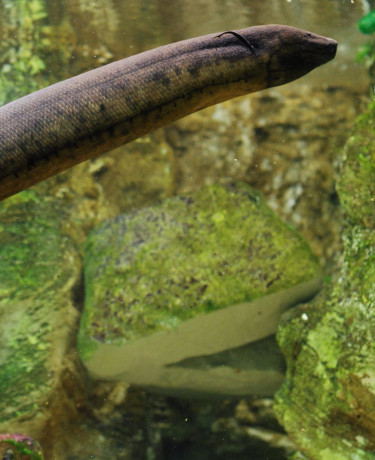
South American lungfish (dipnoi)
Lepidosiren paradoxaThe term “dipnoi” means “double breathing system”, implying pulmonary and branchial.
These animals are Sarcopterygii, a monophyletic group of bony vertebrates that also includes the Coelacanths and tetrapods.
The South American lungfish (Lepidosiren paradoxa - Lepidosirenidae) is the only representative of the group in South America (Amazon Basin and the rivers of the Paraná in Brazil). It prefers stagnant water. It is capable of surviving periods of drought by making a burrow in the mud. Through limiting its metabolism, it can get through this specific period by using two functional lungs (estivation).

Legende
Dipneuste américain aspirant de l'air à la surface - Lepidosiren paradoxa
Breeding takes place during the rainy season. The adults make a nest in which the male takes care of the larvae. These have external gills (just like triton or salamander larvae) that gradually regress. To facilitate oxygenation of the nest and the young, the pelvic fins become vascularised to play the role of “reverse” gills, producing oxygen and receiving carbon dioxide. It will take around 7 weeks for the juveniles to switch from breathing through their gills to obligatory pulmonary respiration.



